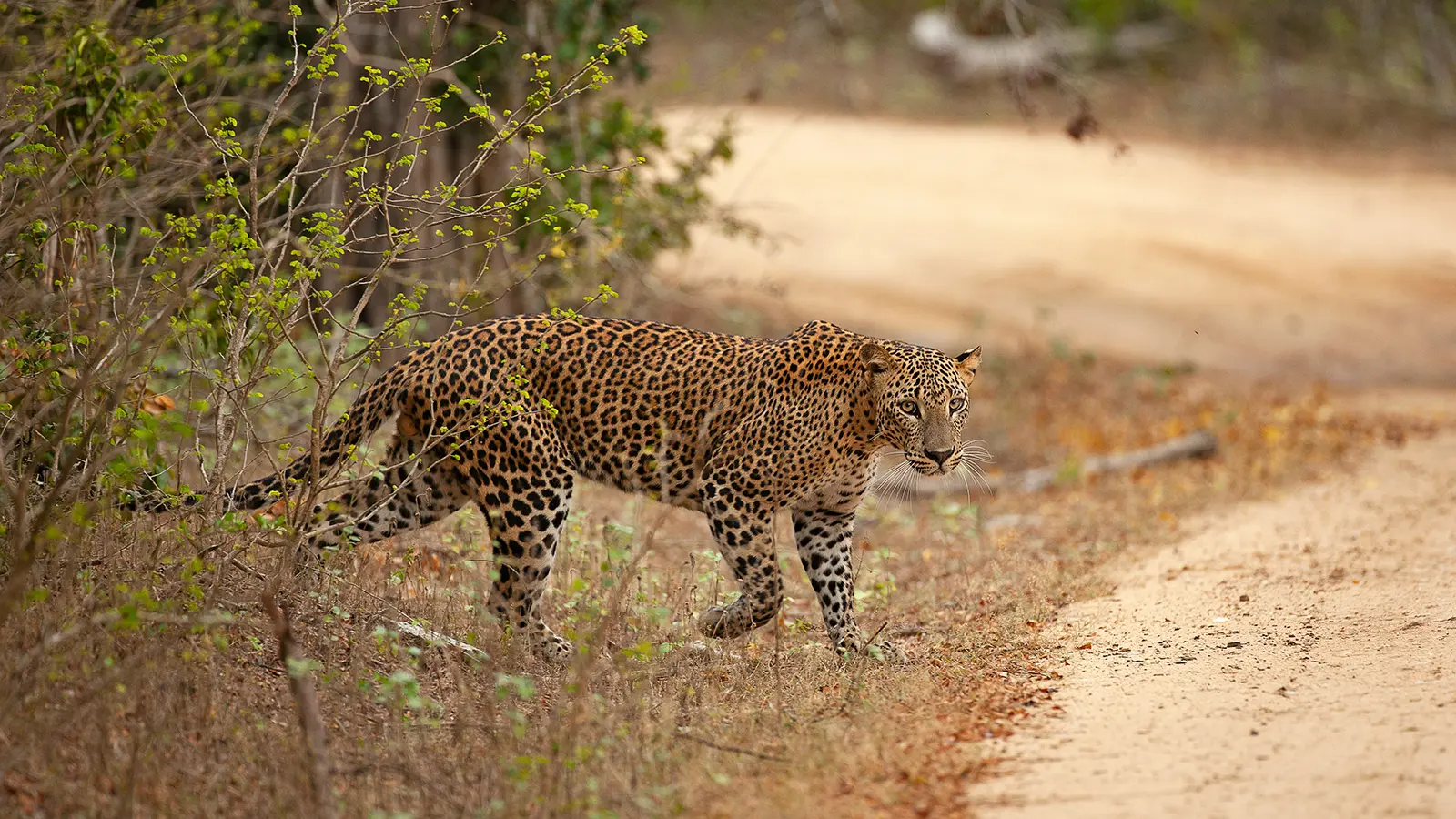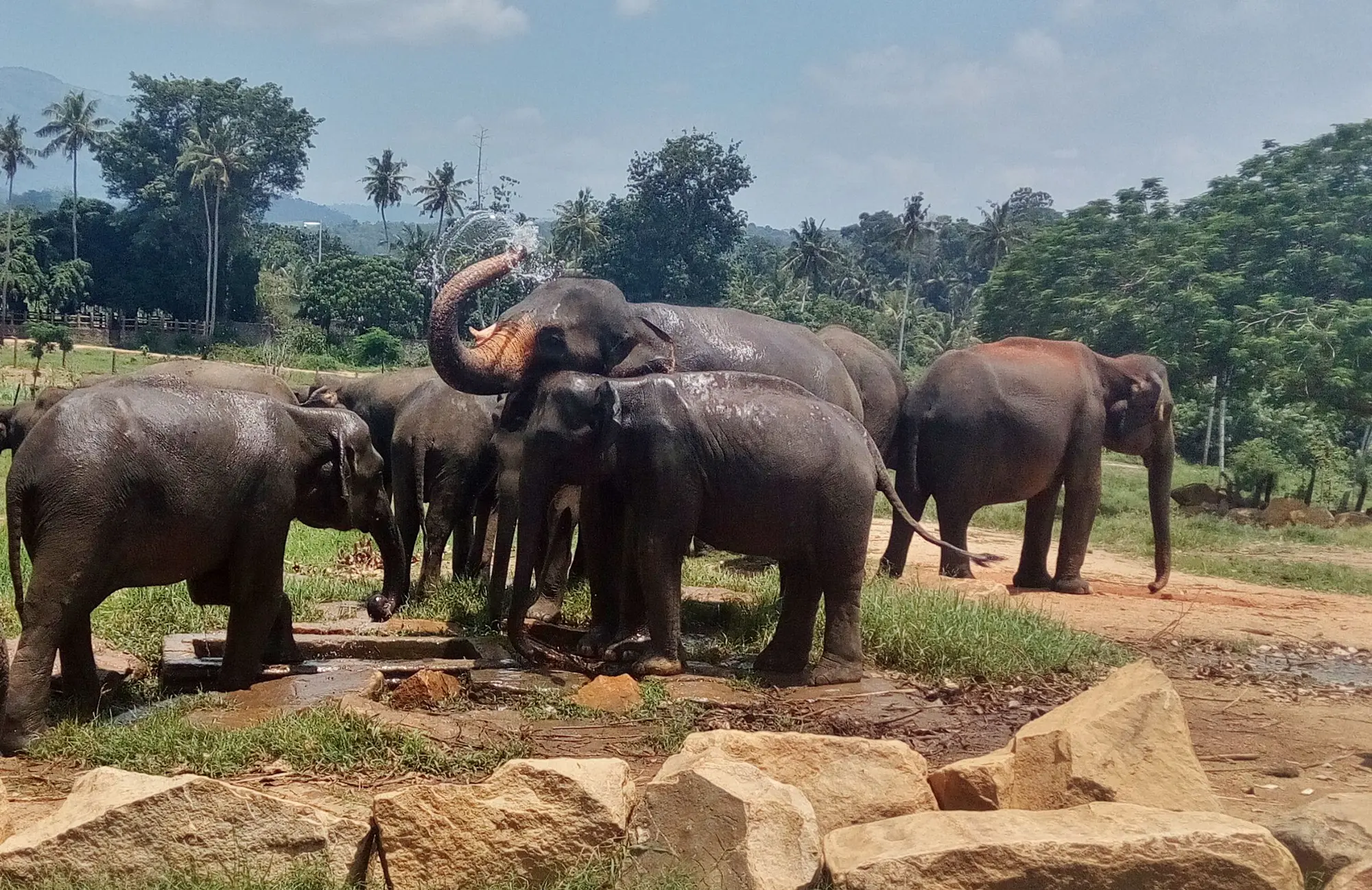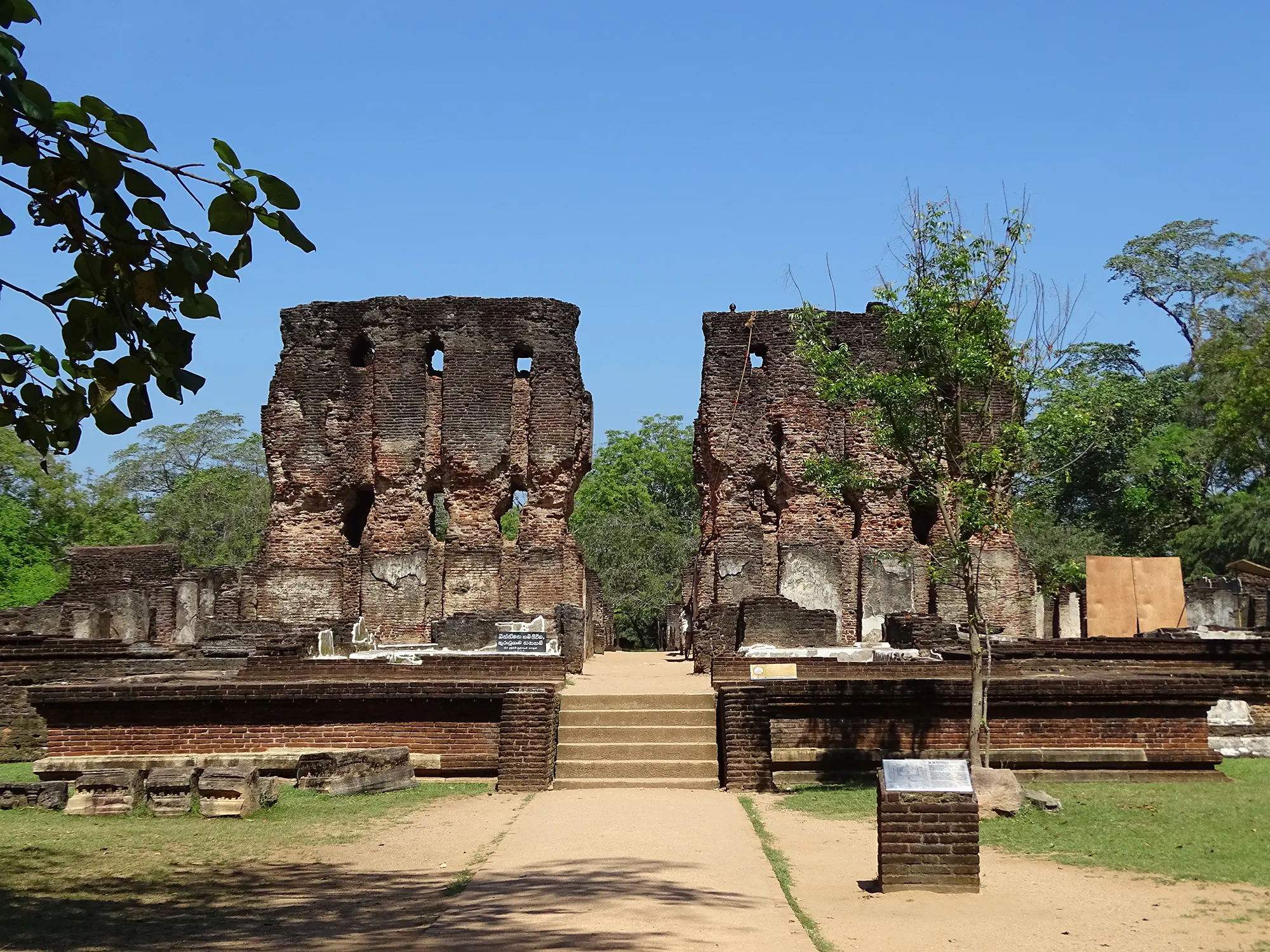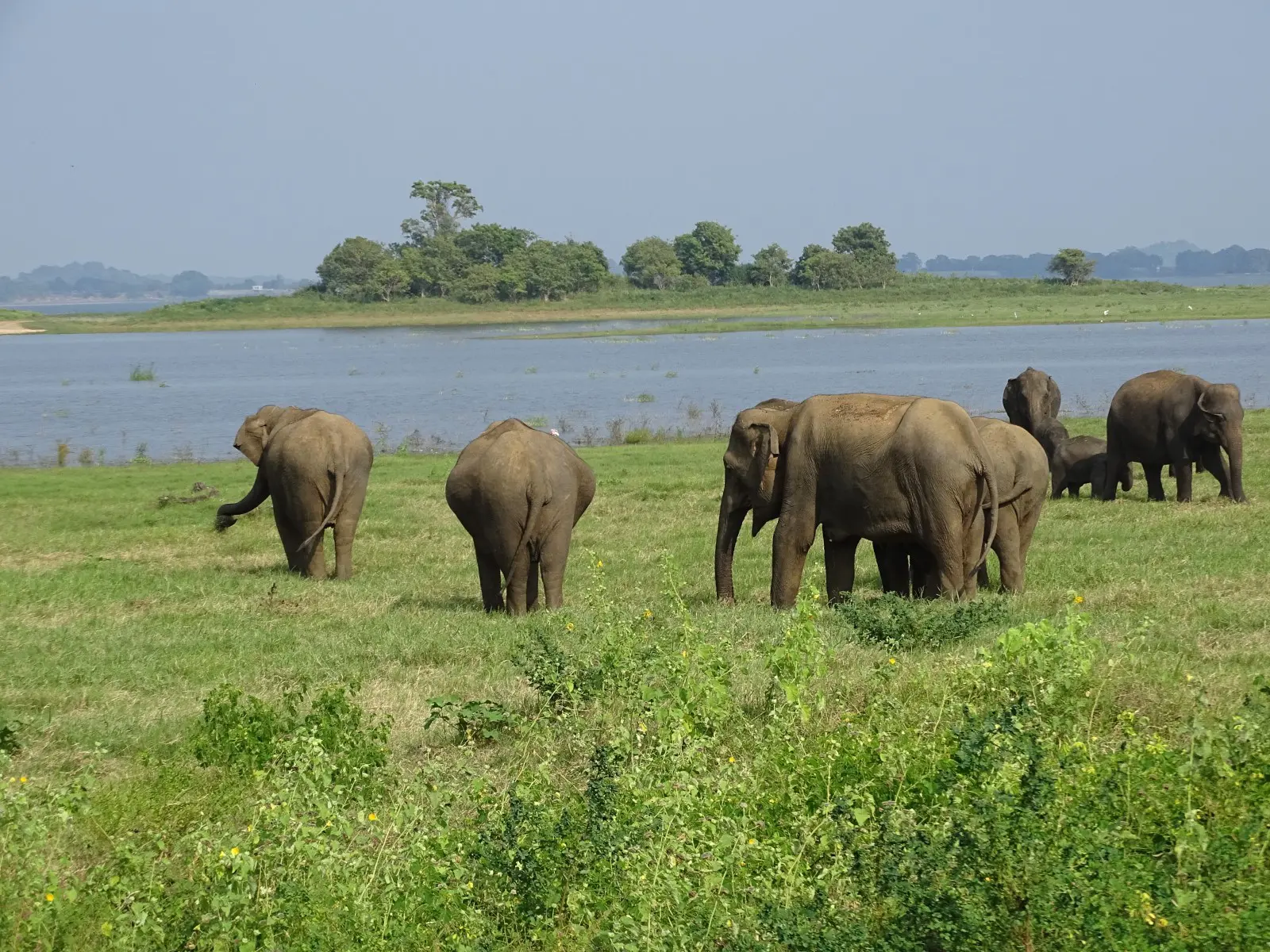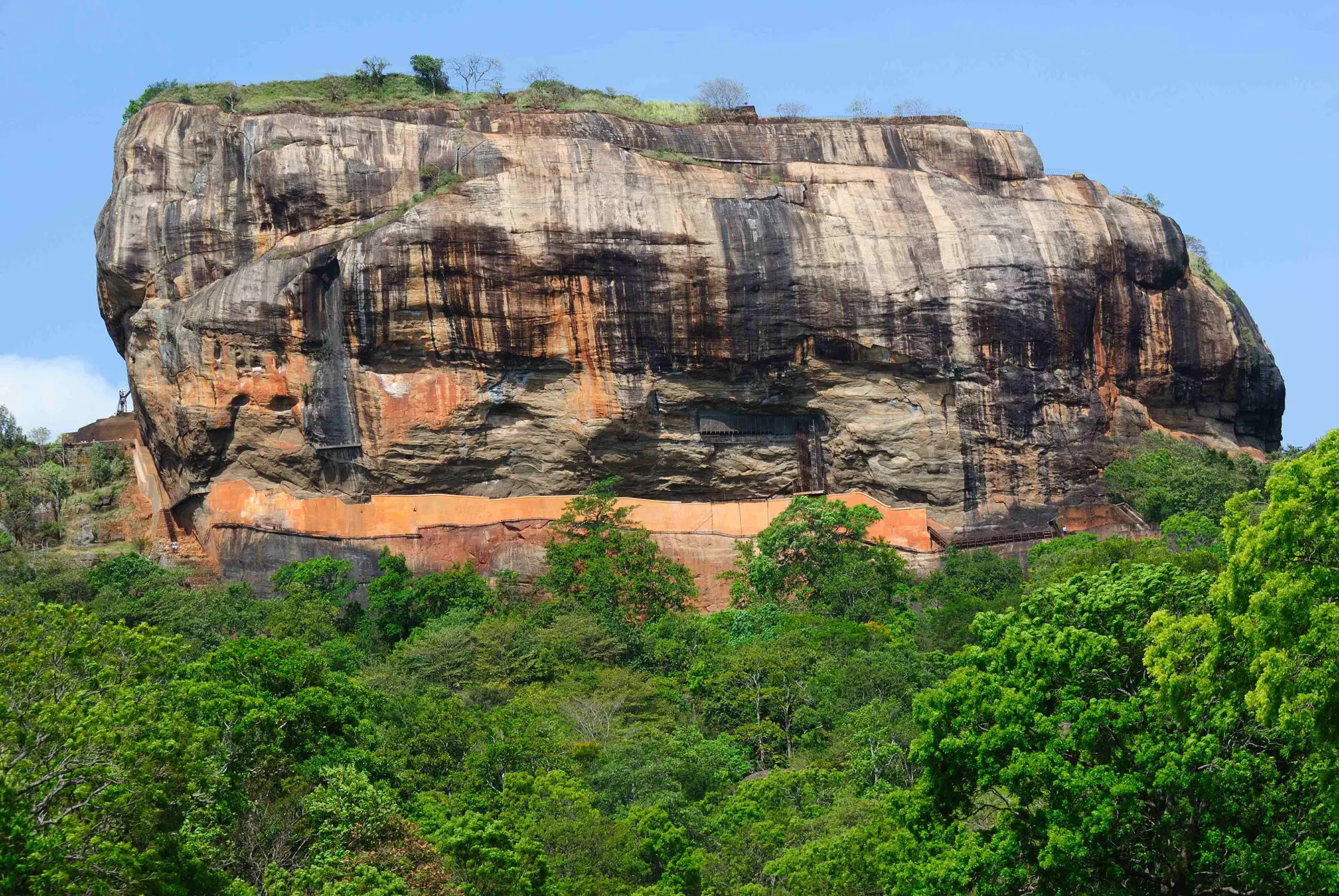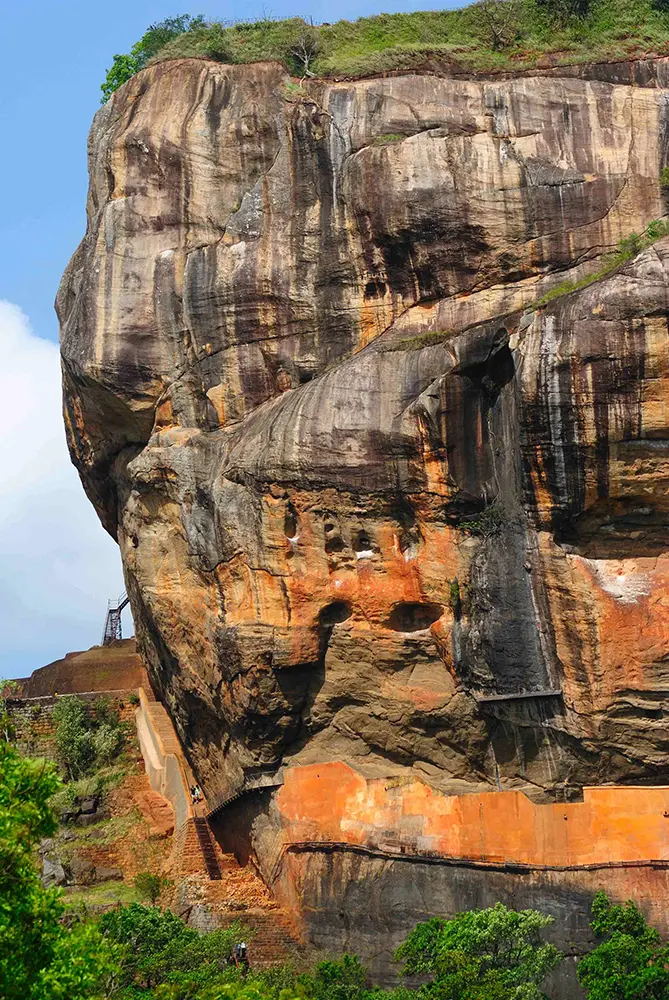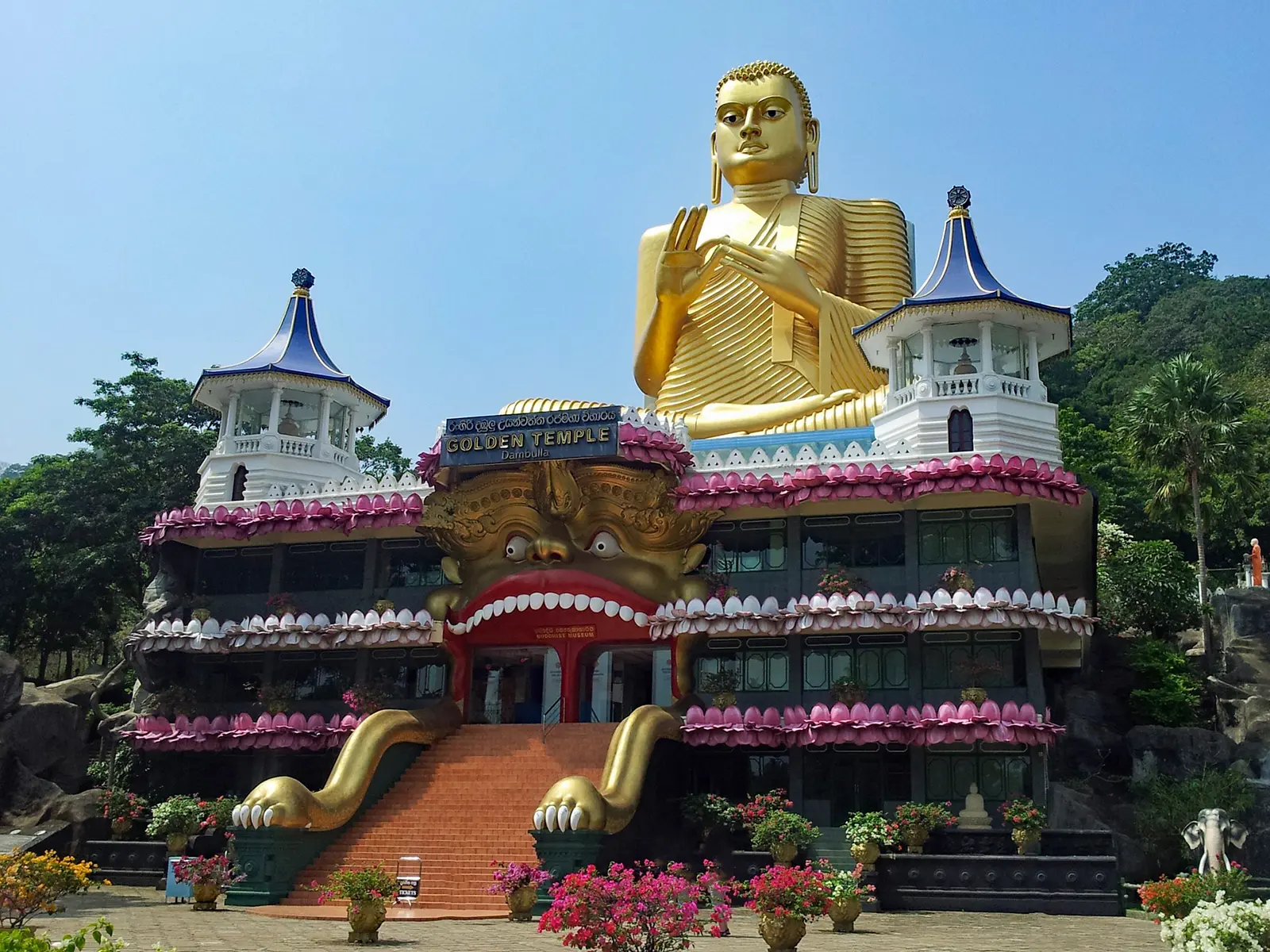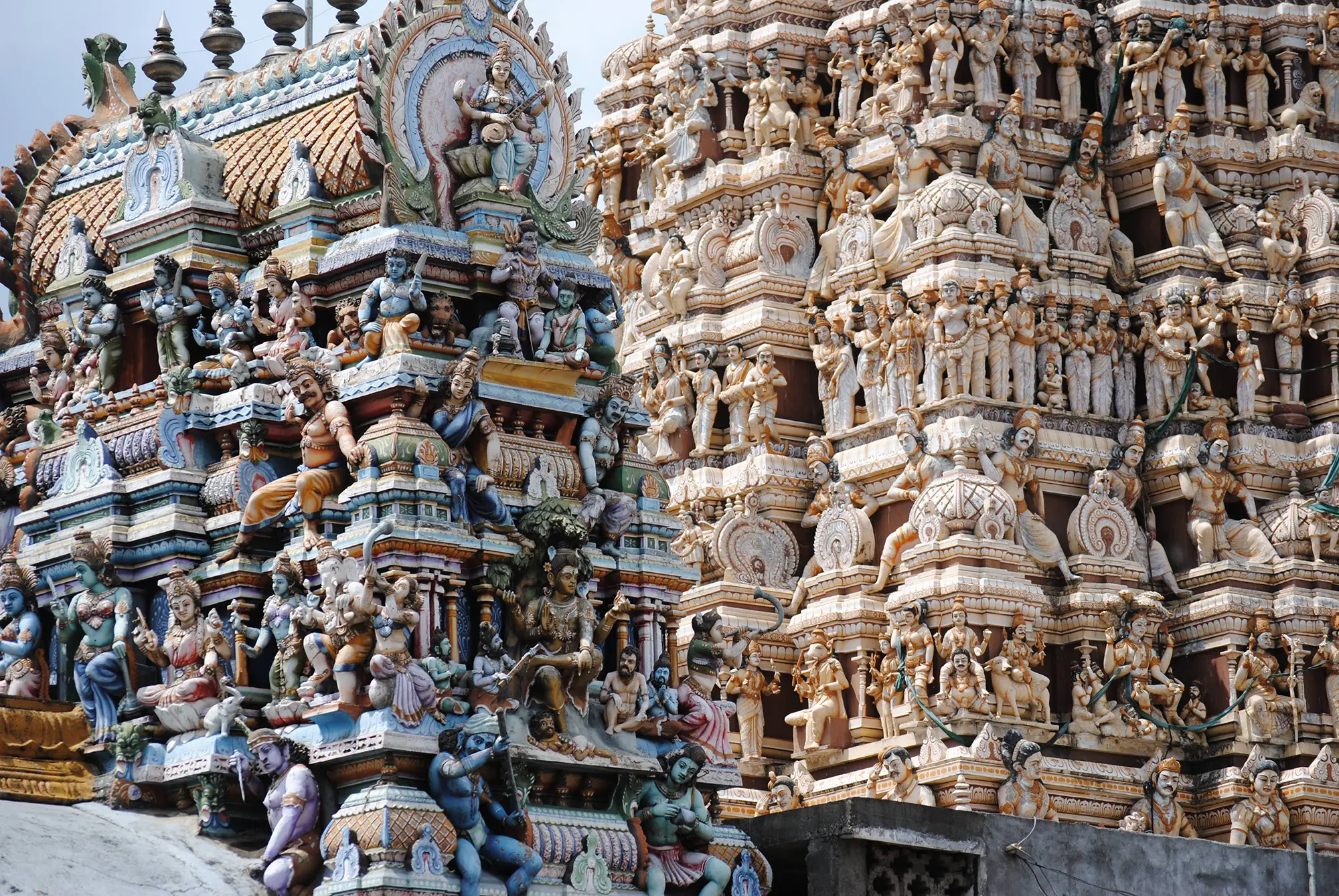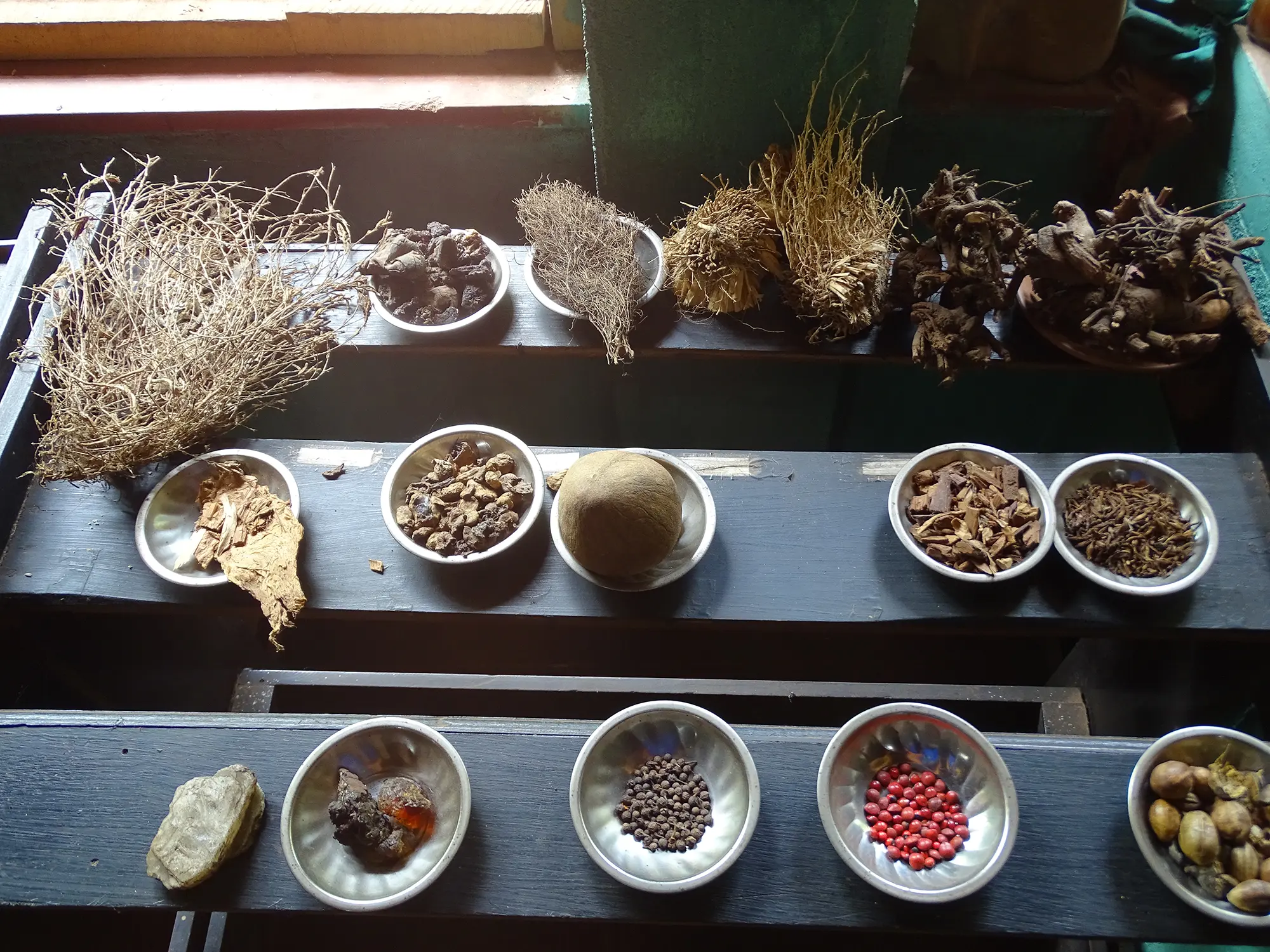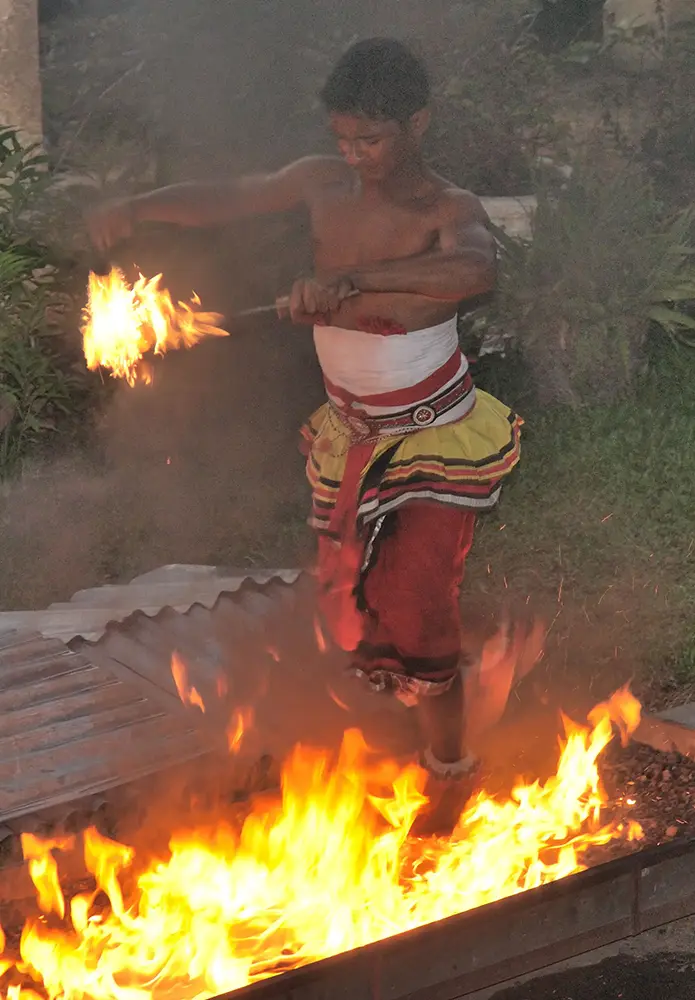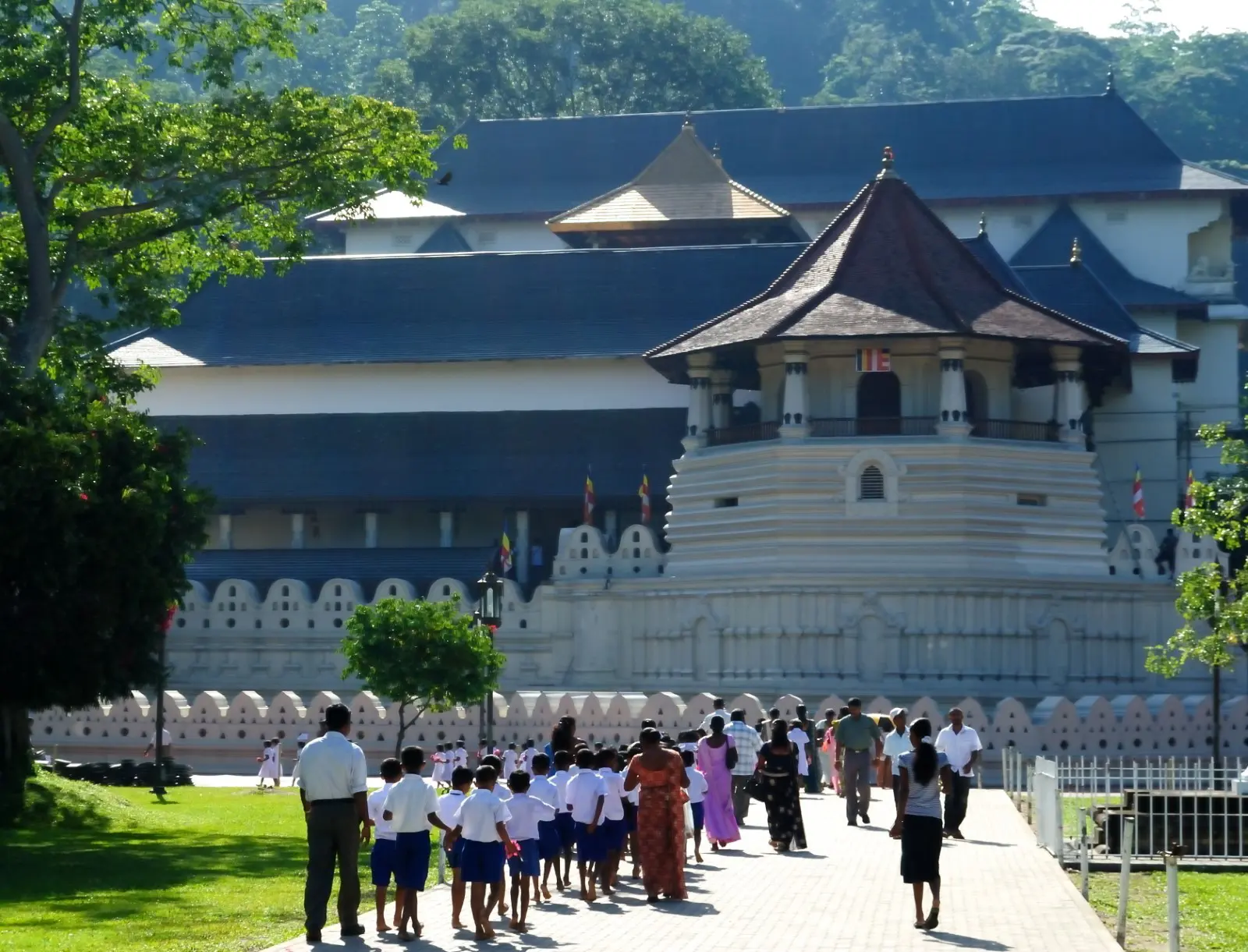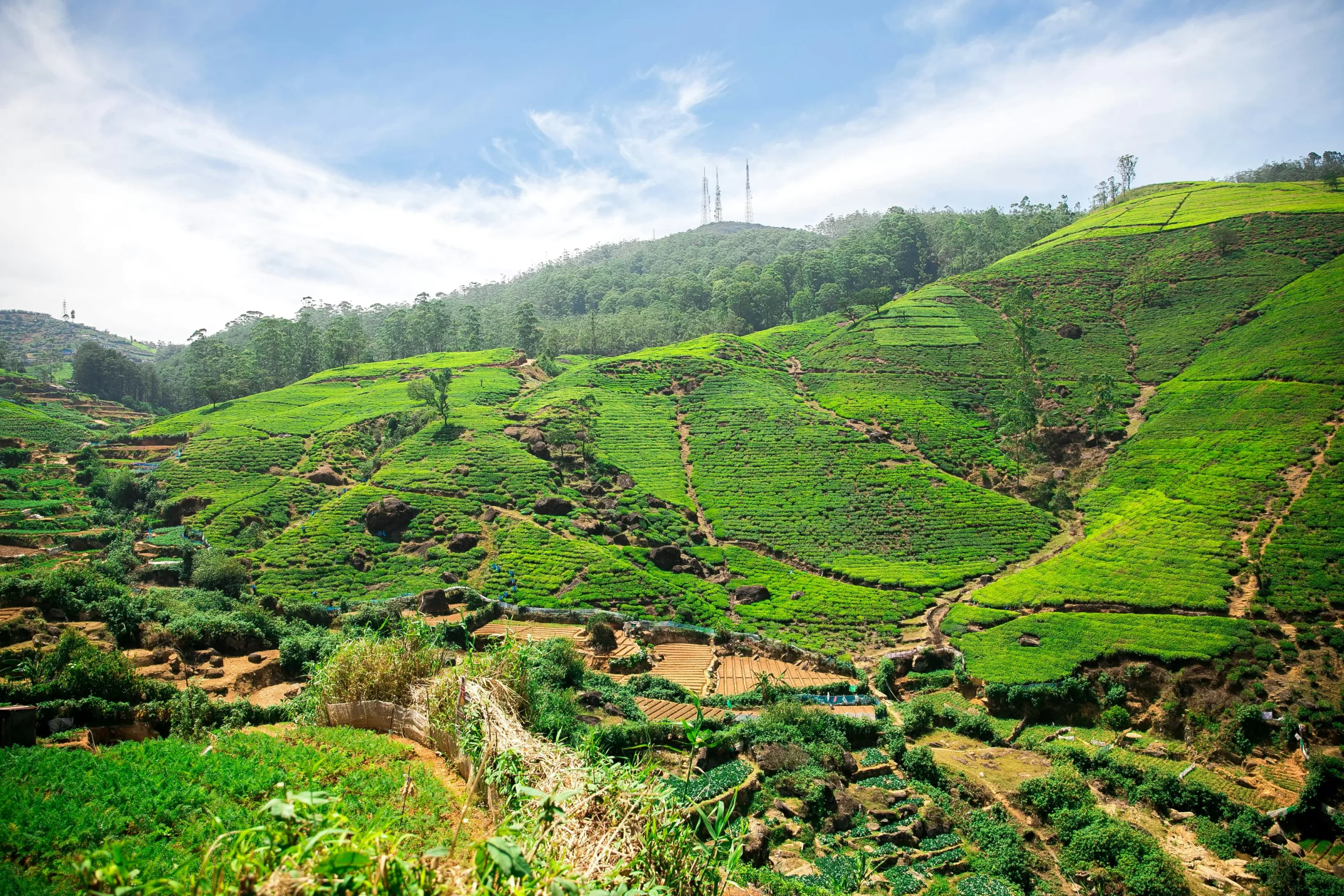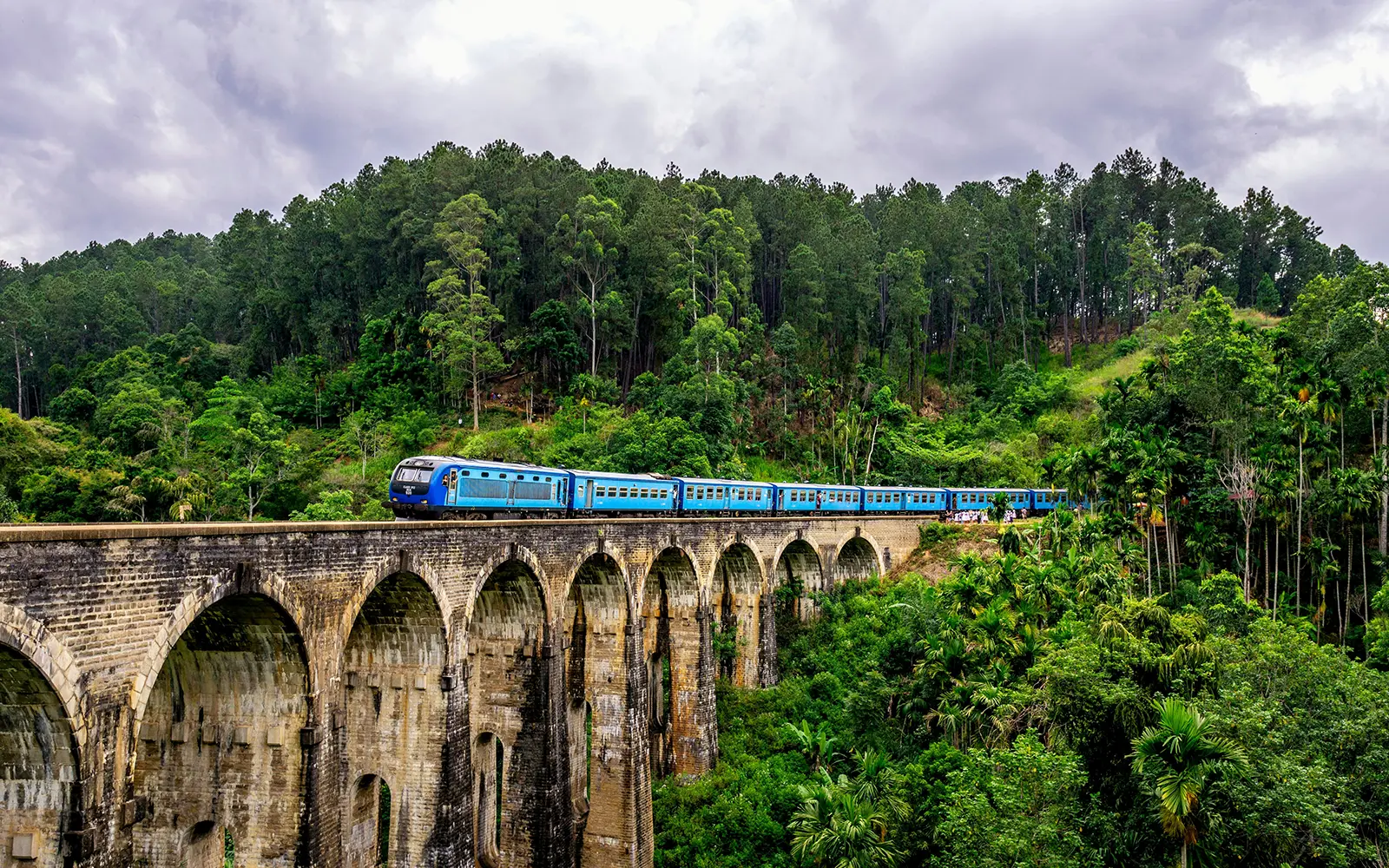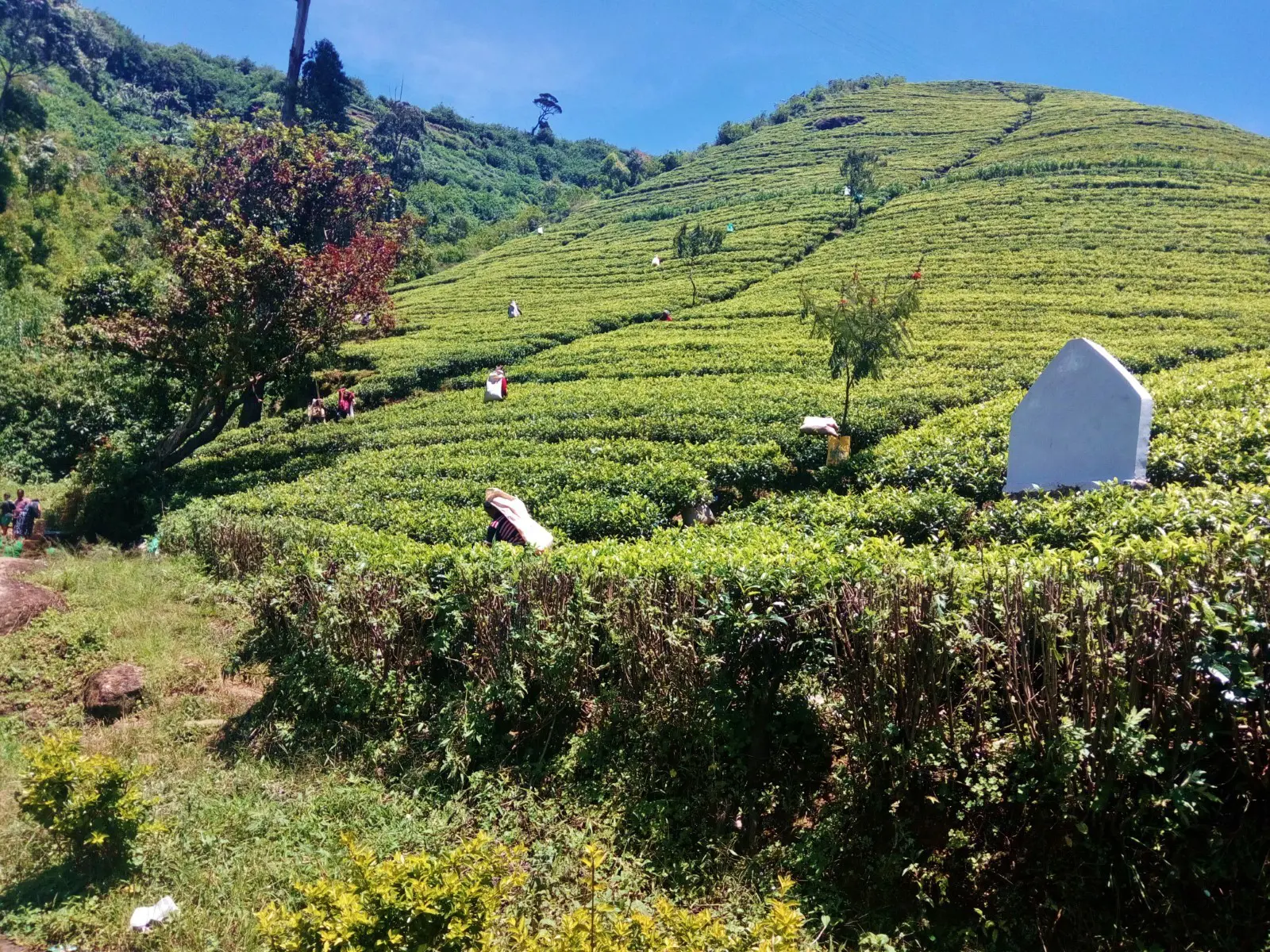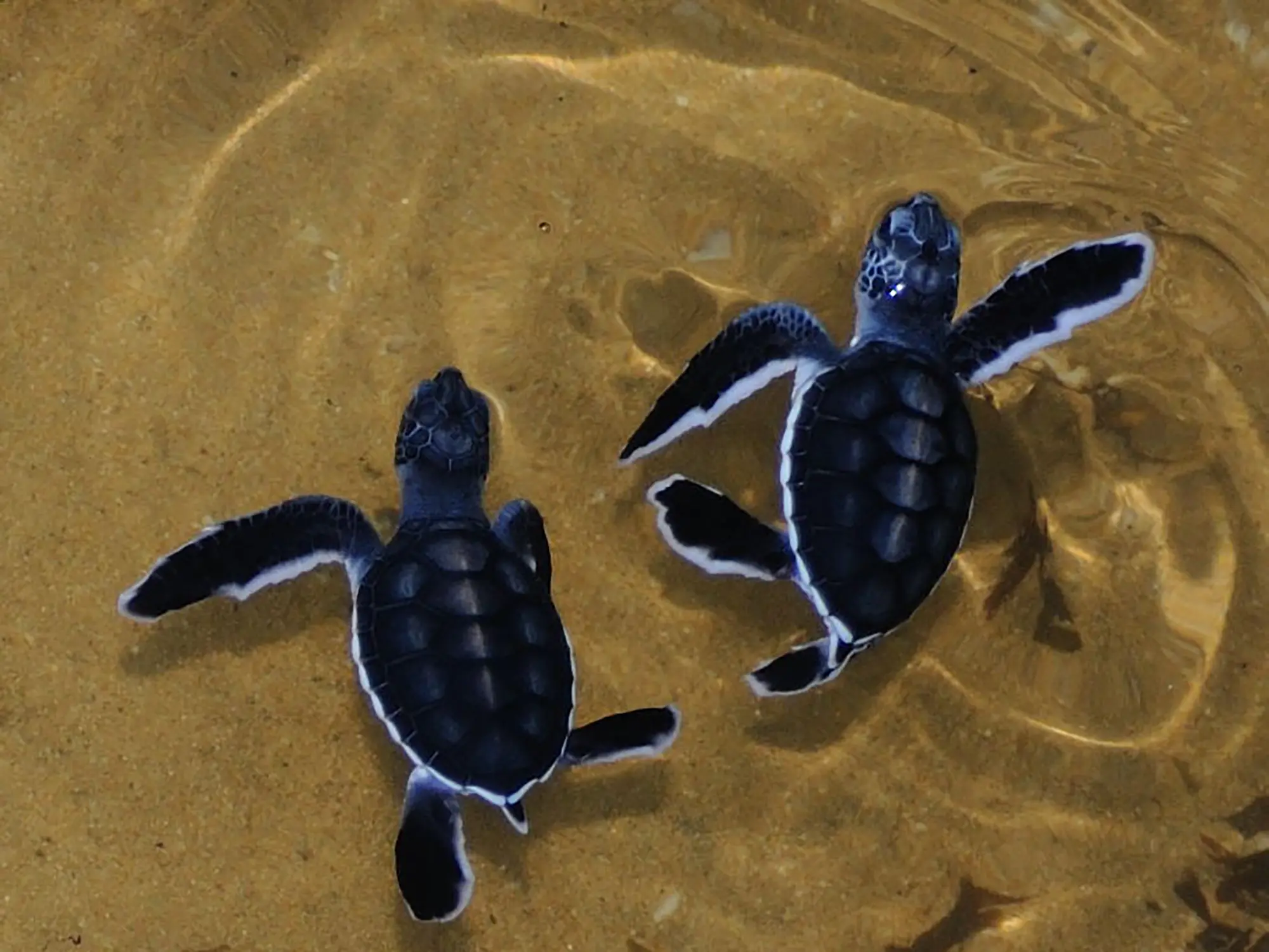07 Days / 06 Nights
Itinerary In Brief
Colombo - Pinnawala
Habarana / Sigiriya
Polonnaruwa / Minneria National Park
Habarana / Sigiriya
Sigiriya / Village Tour
Habarana / Sigiriya
Dambulla
Kandy
Kandy / Nuwara Elliya
Nuwara Elliya
Ella / Kataragama
Tssamaharama
Yala National Park / Galle
Package Description
Elephant orphanage in Pinnawala
Polonnaruwa – ruins of a city from the 12th century
Minneria – national park – Asian elephants
Sigiriya – the rock fortress of King Kassiapa from the 5th century AD
Dambulla – Golden Temple
Ayurveda – Gardens with herbs and spices
Sri Mutumuriaman Temple in Matale
Temple of the Buddha’s Tooth Relic
Nuwara Elliya – tea fields, tea factory, mountain waterfalls, conquering Little Adam’s Peak, train ride through the most beautiful areas of Sri Lanka
Jeep safari in Yala Park
Fort in Galle
Cruise on the Madu River
Turtle hatchery.
Day 1 Colombo - Pinnawala
Our guide will pick you up from the Colombo airport, where our tour program will begin. On the way to the Elephant Orphanage in Pinnawala, we will see lowland plantations of tea, rubber, coconuts, rice and pineapples. Near Nittambuwa you can stop at one of the stalls offering the most delicious fruit on the island in season. The first attraction of the program will be a visit to Pinnawala, a world-famous elephant orphanage where over 90 animals are currently being raised. Some of them have reached the mature age of 50 for an elephant. Elephants cannot be released into nature reserves on the island, because at best they would die of starvation and at worst they could sow fear among local residents, because elephants accustomed to the presence of humans will always cling to them. During your visit to Pinnawala, you can watch elephants being fed milk and have the opportunity to (optionally) feed an adult elephant with fruit. This is an opportunity to take interesting photos, because pieces of fruit are placed directly into the mouth of the giant mammal, placed gently on its pink tongue. The mammal is clearly delighted with this system of obtaining food, because in natural conditions it has to travel many kilometers every day in search of pastures because one individual can eat about 200 kg of green matter, fruits, trees, vegetables every day and it eats for 80% of its life. During the visit, we will also see the elephants crossing to a watering hole, the nearby Ma oya stream. There, the elephants take their daily bath, and the young ones have fun while bathing, engaging in endless and amusing arguments, trunk fights, and wrestling. The center also has a free range for elephants, where the only border between humans and giants are stone boulders. In total, there are approximately 90 individuals of Elephas maximus maximus of various ages and sexes in the center. The center plays an important role in research on these largest land mammals on earth, in particular it contributes to reproduction, which later results in an increase in the number of individuals living in Sri Lanka. It is the largest center of this type on Earth. It is worth taking a closer look and assessing the daily rigor and actions of the staff rather than relying on the often contradictory opinions of Internet users.
Habarana / Sigiriya
Day 2 Polonnaruwa / Minneria National Park
After breakfast we will go to Polonnaruwa – the capital of Sri Lanka from the period between the 10th and 12th centuries AD. On the way we will look into a sculpture workshop, where masters of the craft make wooden sculptures of local gods, Buddha statues, furniture and everyday objects. It is worth watching the work of sculptors. It is also here that masks used in Sri Lanka in magical ceremonies, to cure diseases, to repel evil powers or in theatre plays are made. The ruins of Polonnaruwa are a fascinating example of one of the most developed water civilisations in the world. We will see the ruins of the seven-storey palace of King Parakramabahu, the former office of the council of ministers, the royal baths and pools, the temple of Shiva’s penis, the sacred square with the temples of Tupa Rama, Hatadage, Atadage, Vatadage, Nissnkamala Mandapa, Gal Pota (stone book) and a temple of unknown origin, built as a gift from another nation. we will go to Gal Vihara, where there are considered to be the most beautiful Buddha statues on the island carved in rock. Polonnaruwa is on the UNESCO World Heritage List.
In the afternoon, a jeep safari through the national park. Minneria National Park was established in 1992. It is home to the world’s largest herds of Asian elephants, and was also named one of the most beautiful parks in the world by the American station CNN in 2014. A jeep tour through this park is a real pleasure and a great treat for those who like to photograph wildlife. Herds of elephants reach a number of up to 400. The park is an extremely rewarding object for photography, due to the fabulous colors of the flora and the majestic herds of wild elephants and water buffalo.
Habarana / Sigiriya
Day 3 Sigiriya / Village Tour
After breakfast, we will go to Sigiriya, a monolith over 200 meters high, where King Kassiapa built a fortress in the 5th century AD. The height to be overcome is approximately 200 vertical meters, mainly along stairs and paths. The rock has been inhabited for thousands of years, but the most visible result of human activity are the ruins of the city from the 5th century AD, along with a preserved and still well-functioning hydraulic system, including spa and massage salons, swimming pools, fountains, artificial streams, cascade gardens and ponds. From the top of the mountain there is a view of the nearby jungle, rice fields, fountain gardens and swimming pools that we passed earlier, and you can see a giant statue of Buddha in mudra – come to me, don’t be afraid. On the way, we pass caves with the remains of frescoes from the reign of King Kassiapa. The lion’s platform, which was once defended by the open mouth of the colossal lion built there (now only its paws and claws remain), opens the entrance to the very top. The ascent and descent will take approximately 2.5-3 hours, but people who are afraid of heights may have problems reaching the very top.
In the afternoon, we will go by ladder carts to a local village near Habarana / Sigiriya, where we will be able to learn a bit about the everyday life of the people in the province. We will see huts built of clay, cow dung and sticks, farmers’ gardens and farmyards, illegal Chen plantations built using the “burn and slash” method, and pulpits from which farmers scare away wild animals, including elephants at night. We will see how Sri Lankans make roofs from palm leaves, clean rice from husks, we will try local infusions and flatbreads from the locals’ home kitchen, we will go on a short catamaran cruise on the reservoir that supplies rice fields and other agricultural fields. We will end the trip that day with a tuk tuk ride.
Habarana / Sigiriya
Day 4 Dambulla
Dambulla – Rangiri Golden Temple. (UNESCO)
That day we will visit the Rangiri Temple in Dambulla. There are two parts – the modern one, built at the end of the 20th century with a gigantic statue of Buddha in the Darmachakra mudra and installations representing Buddha’s disciples, an artificial rock, a Buddhist museum and other shrines. The monk managing this strange product of Buddhist architectural thought also runs a radio station, a newspaper publishing house, a television station, a foundation and a Buddhist university. However, the modern part of Dambulla is not our goal. We will go to a small hill, where in caves divided into five caves there is a Buddhist temple founded by King Vlagambahu in the 1st century BC. There are 150 Buddha statues and a dozen or so other statues of Sri Lankan kings and magnates from different eras as well as statues of Hindu gods and numerous statues of bodhisattvas.
Ayurveda – local medicine.
Along the way, we will stop at Ayurvedic gardens to learn about Ayurveda, a unique medical system still used today in India and Sri Lanka.
Ayurveda came to Sri Lanka from India and is now a science recorded in Ayurvedic scriptures. In parallel with the Ayurvedic medicine system, a trend of folk medicine was created in Sri Lanka. Both of them are intertwined in everyday practice, often solving problems that cannot be solved from the point of view of conventional medicine. A visit to Ayurvedic gardens will allow you to observe the multitude of flora available in Sri Lanka and the ways in which it is used for treatment. During a walk through the gardens, you will be able to see how pepper, coffee, cinnamon, cardamom, cocoa, turmeric, vanilla, nutmeg, etc. grow. You will be able to learn how individual plants affect our body and try a demonstration arm or leg massage using Siddartha oil.
On the way to Kandy, you can see various plantations of trees such as mahogany, teak, rosewood, ebony, etc.
In Matale, if possible, we will visit an extremely colourful temple that was built as a result of the cure for a smallpox epidemic in a former transit camp for plantation workers from India.
In Kandy, we will walk through the streets of Kandy on the way to the YMBA on Upper Lake Drive, where we will be able to watch an approximately hour-long folk dance show and a demonstration of fire walking, fire swallowing and fire smearing. 13 different dances from the regions of Sri Lanka will be presented, including peacock dance, rice cleaning, acrobatics, juggling, ritual dances, Kandyan dance.
Kandy
Day 5 Kandy / Nuwara Elliya
After breakfast, visit: Temple of the Buddha Tooth Relic.
A holy city for the Buddhist inhabitants of Sri Lanka where the Temple of the Buddha’s Tooth Relic is located. In Kandy we will visit the Temple of the Buddha’s Tooth – Sri Dalada Maligawa. The temple, built in the 16th century, is currently protected by a golden roof donated by the Japanese in the 1990s. Depending on the time, we will be able to participate in active gift rituals called “pudzia” or visit the facility in peace, see the mummified elephant Raja, which carried the Buddha’s Tooth during religious processions that are still held in Kandy today, called Esala Perahera. During our visit to Kandy, we will also visit the temples of Hindu gods and goddesses located in the immediate vicinity of the Temple of the Buddha’s Tooth Relic. We will see the temples of the goddess Pattini, the god Natta and Gamidar. You will be able to observe everyday religious activities in this temple complex, the most popular among Buddhist followers on the island. Dalada Maligawa is the most important Buddhist temple on the island, built at the end of the 17th century, and is a pilgrimage center for followers of Buddhism from Sri Lanka as well as from other countries where the Teravada Buddhist doctrine is known. The multitude of temples built around the one containing the Buddha’s Tooth relic is noteworthy, as there are several Christian churches and a mosque nearby.
Shopping.
In Kandy, it is worth looking around for sapphires, rubies and other gemstones. There are numerous polishing and jewelry factories that process stones purchased from the Rathnapura stone mines. In Kandy, you can also visit factories that produce batiks – fabrics dyed using the waxing method. Sculpture workshops and outlets selling branded clothing from Sri Lankan sewing factories at great prices are also on the tour program.
From Kandy we will go to Nuwara Ellia, a mountainous region of the island, considered the most beautiful region of Sri Lanka. In Nuwara Ellia, on tea plantations, we will try to find Tamil women – tea fox pickers, a tea factory (visiting and tasting unblended BOP tea), waterfalls, Hindu temples, Victorian architecture, a visit to the town of Nuwara Elliya, the famous Baal Bazaar where you can buy at surprisingly low prices discounted branded sweatshirts, T-shirts, coats, Grand Hotel, golf course, Hill Club, horse racing track, Gregory””s Lake. We will be at an altitude of approximately 1,800 meters above sea level. Sometimes it can be cold, so you should take warmer things with you just in case. Dinner and overnight at a hotel in Nuwara Elliya.
Nuwara Elliya
Day 6 Ella / Kataragama
that day we will go by train to Ella. The route stretches through the most picturesque regions of Sri Lanka, leads through numerous tunnels, valleys and mountains. During the approximately 3.5 hour train ride among tea plantations we will see majestic waterfalls, railway bridges commemorating the times of the British in Ceylon.
Ella is a resort town and starting point for many trekking trails in Sri Lanka. We will head to Punchi Siri Pada – Little Adam’s Peak, which offers a breathtaking view of the Ella Valley. You can also see the Ravana Falls on the other side of the Ella Valley. After climbing and descending Little Adam’s Peak, we will head to the Ravana Falls, usually a very popular bathing spot for local and foreign tourists.
In the evening we will visit Kataragama, the most important place for Hindus on the island. There is a temple dedicated to the god Kataragama, where religious ceremonies take place in the evenings, along with characteristic kolam dances. This place is extremely popular, as pilgrims from all over the island come there, as well as pilgrims of all religions: Buddhists, Hindus, Muslims and Christians.
Tssamaharama
Day 7 Yala National Park / Galle
Early in the morning we will go on a jeep safari in Yala National Park. This is the second largest national park in Sri Lanka, which is characterized by a great diversity of flora. Here we will find Asian elephants, old world monkeys, bears, axis deer, wild pigs, water buffalo, various species of birds, jackals, marsh and saltwater crocodiles, but above all the biggest attraction of the park are leopards.
After the safari we will go to the west coast. On the way, we will visit the 17th fort in Galle (UNESCO), where the life of local inhabitants continues to this day, and we will go on a motorboat cruise on the Madu River.
During the cruise on the river, which has 66 islands, we will see a cinnamon plantation on one of them and see how this popular spice is obtained and produced in the world. There are interesting structures on the river – shrimp traps. The river provides local residents with many benefits that are not necessary for life, during the cruise we will see how local pickpockets use the current of the vast Madu Ganga.
Finally, we will go to a turtle hatchery, where we will be able to see how local residents are trying to contribute to increasing the population of these marine reptiles, which are currently on the list of endangered species. In the aquariums there are small turtles to be released in the evening, in other pools there are older individuals of various species of sea turtles to be released when they reach an older age.
Need Help?
Have questions about our tours or need help deciding the best fit for you? We're here to assist! Feel free to reach out anytime for personalized guidance and recommendations. Your perfect adventure awaits – let's make it happen together!

